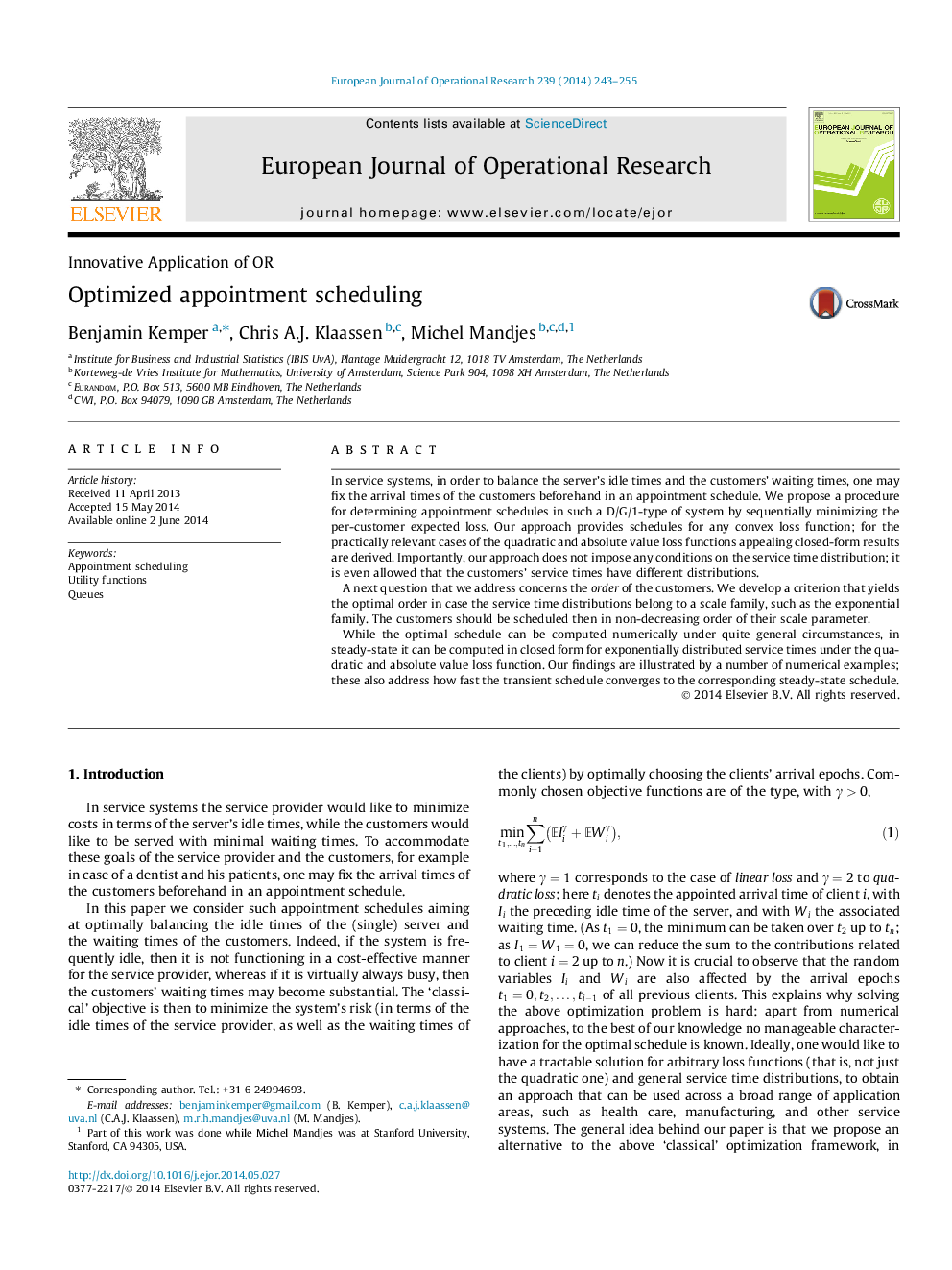| Article ID | Journal | Published Year | Pages | File Type |
|---|---|---|---|---|
| 479804 | European Journal of Operational Research | 2014 | 13 Pages |
•We present an approach to compute optimized appointment schedules.•The technique sequentially minimizes risk in terms of waiting time and service time.•The technique applies to any convex loss function and service time distribution.•We indicate that the approach is able to cover real-life phenomena such as no-shows.•We demonstrate the approach by three representative examples.
In service systems, in order to balance the server’s idle times and the customers’ waiting times, one may fix the arrival times of the customers beforehand in an appointment schedule. We propose a procedure for determining appointment schedules in such a D/G/1-type of system by sequentially minimizing the per-customer expected loss. Our approach provides schedules for any convex loss function; for the practically relevant cases of the quadratic and absolute value loss functions appealing closed-form results are derived. Importantly, our approach does not impose any conditions on the service time distribution; it is even allowed that the customers’ service times have different distributions.A next question that we address concerns the order of the customers. We develop a criterion that yields the optimal order in case the service time distributions belong to a scale family, such as the exponential family. The customers should be scheduled then in non-decreasing order of their scale parameter.While the optimal schedule can be computed numerically under quite general circumstances, in steady-state it can be computed in closed form for exponentially distributed service times under the quadratic and absolute value loss function. Our findings are illustrated by a number of numerical examples; these also address how fast the transient schedule converges to the corresponding steady-state schedule.
